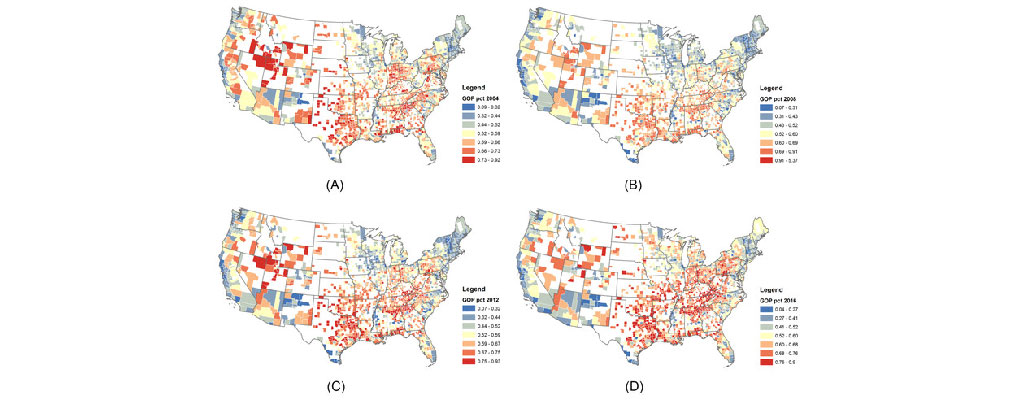Research conducted by:
Bruce Desmarais, Professor of Political Science, the William and Monica DeGrandis-McCourtney Early Career Professor in Political Science, and ICDS Co-Hire
Tags:
big data Mapping political science social science
Research Summary:
Using data science to analyze U.S. migration patterns, a team of researchers found that when people migrate, they tend to move to other counties that reflect their political preferences. They added that the pattern also suggests that people moving from moderate partisan counties are just as likely to move to extreme partisan counties as they are to move to other moderate counties. However, people who live in a politically extreme county are significantly likely to move to a similarly extreme county.
How Roar played a role in this research:
The team ran models on the Roar system
|
Article Title: |
Migration and political polarization in the U.S.: An analysis of the county-level migration network |
|---|---|
|
Published In: |
PLOS One |
|
Abstract: |
Research question From gridlock in lawmaking to shortened holiday family dinners, partisan polarization pervades social and political life in the United States. We study the degree to which the dynamics of partisan polarization can be observed in patterns of county-to-county migration in the U.S. Specifically, we ask whether migration follows patterns that would lead individuals to homogeneous or heterogeneous partisan exposure, using annual county-to-county migration networks from 2002 to 2015. Adjusting for a host of factors, including geographic distance, population, and economic variables, we test the degree to which migration flows connect counties with similar political preferences. Findings Our central finding is that over the period studied, county-to-county migration flows connect counties with similar partisan voting profiles. Moreover, partisan sorting is most pronounced among the most politically extreme counties. The implication of this finding in the context of partisanship is that U.S. migration patterns reinforce partisan sorting, limiting the degree to which individuals will experience cross-the-aisle local social contacts through spatial interaction. This finding builds on existing research that has documented (1) that individuals prefer to move to and live in locations inhabited by co-partisans, and (2) that local geographic areas have become more polarized in recent decades. Our results indicate that large scale patterns of polarized migration flows serve as a potential mechanism that contributes to geographic partisan polarization. View article on publisher's website |

